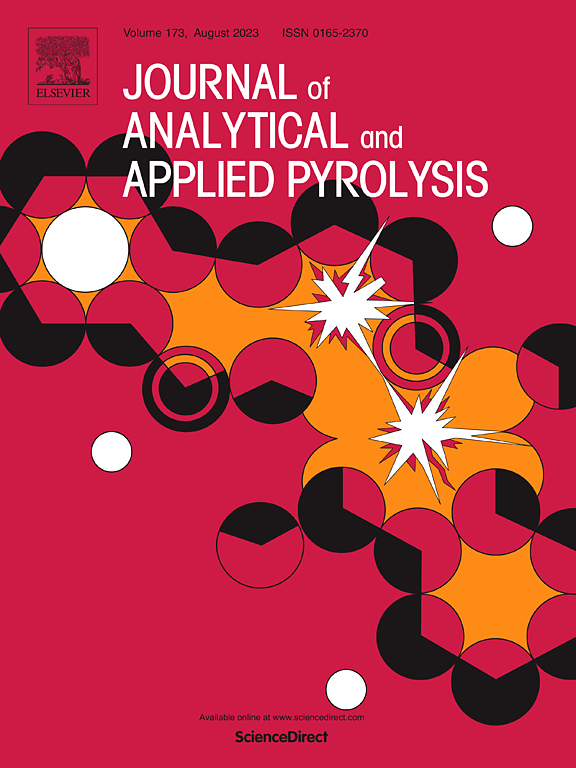Influence of thermo-pressure synergistic effect on deoxygenation and aromatization reactions during extrusion pyrolysis of bagasse
IF 5.8
2区 化学
Q1 CHEMISTRY, ANALYTICAL
引用次数: 0
Abstract
Biomass has the potential to replace coal, contributing to the mitigation of climate and energy challenges. The development of low-energy, high-quality biomass upgrading technologies is of significant importance. The biomass extrusion pyrolysis (EP) technology, which increases the pressure during the heating process of biomass pyrolysis, is anticipated to achieve the desired outcome. Pressure, temperature, and residence time were investigated for their effects on the physicochemical properties and structure of bagasse-derived biochar during EP. The volatile content of EP biochar decreased by 10.21∼12.63 % and the carbon fixation rate (CFR) increased by 23.04∼30.56 % compared with atmospheric pyrolysis (AP) biochar at the same temperature and residence time, below 6 MPa. A synergistic effect of pressure and temperature was observed, resulting in an approximately 10 % reduction in volatile content and a 10∼20 % increase in CFR of extruded pyrolysis products at 6 MPa, compared to AP above 240 °C. Below 240 °C, these values were lower. Comparing the pyrolysis product biochar of AP and EP, as well as those from low and high temperatures, FTIR and Raman analyses demonstrated that oxygen-containing functional groups decreased and the degree of aromatization increased, confirming that extrusion and temperature facilitated deoxygenation and aromatization. Extrusion caused pore structure contraction. In BET data, the specific surface area and pore volume decreased significantly. These, coupled with changes in the biochar's physicochemical properties, indicated that extrusion promoted volatile matter conversion into fixed carbon by gas-solid secondary reactions during pyrolysis.
求助全文
约1分钟内获得全文
求助全文
来源期刊
CiteScore
9.10
自引率
11.70%
发文量
340
审稿时长
44 days
期刊介绍:
The Journal of Analytical and Applied Pyrolysis (JAAP) is devoted to the publication of papers dealing with innovative applications of pyrolysis processes, the characterization of products related to pyrolysis reactions, and investigations of reaction mechanism. To be considered by JAAP, a manuscript should present significant progress in these topics. The novelty must be satisfactorily argued in the cover letter. A manuscript with a cover letter to the editor not addressing the novelty is likely to be rejected without review.

 求助内容:
求助内容: 应助结果提醒方式:
应助结果提醒方式:


